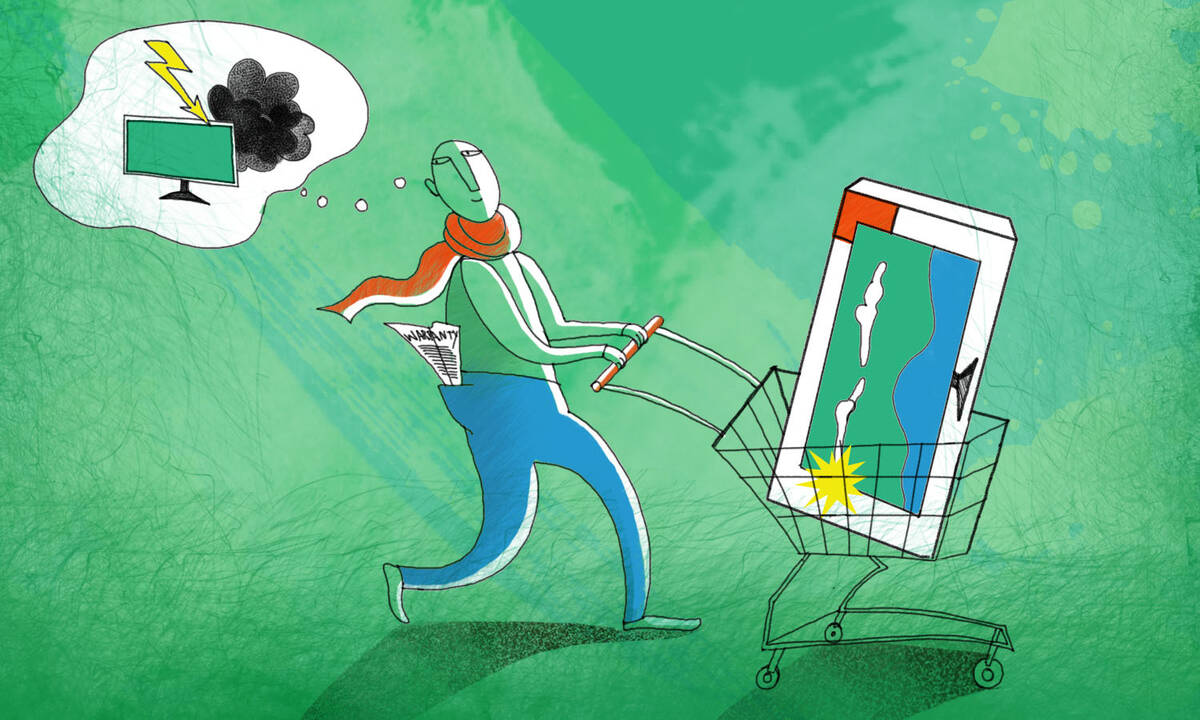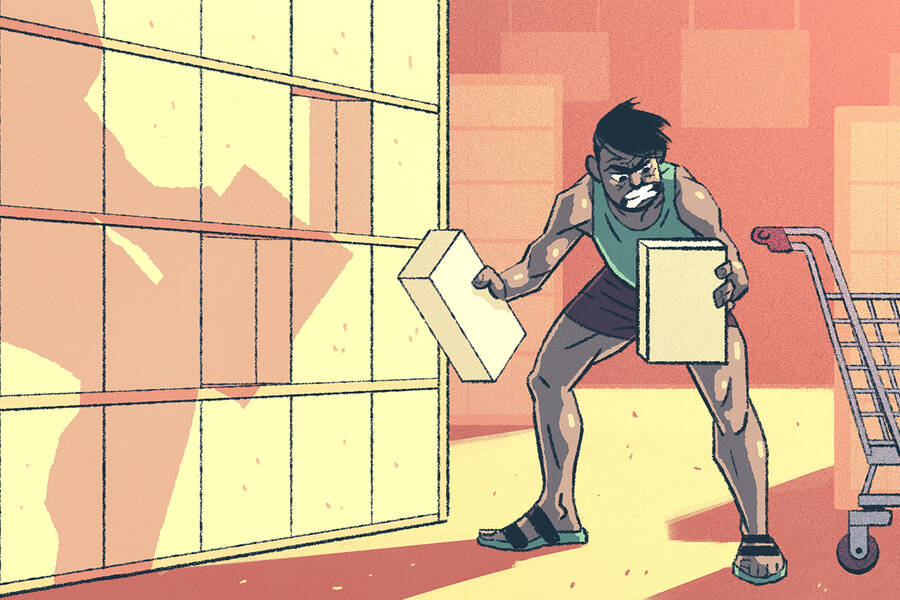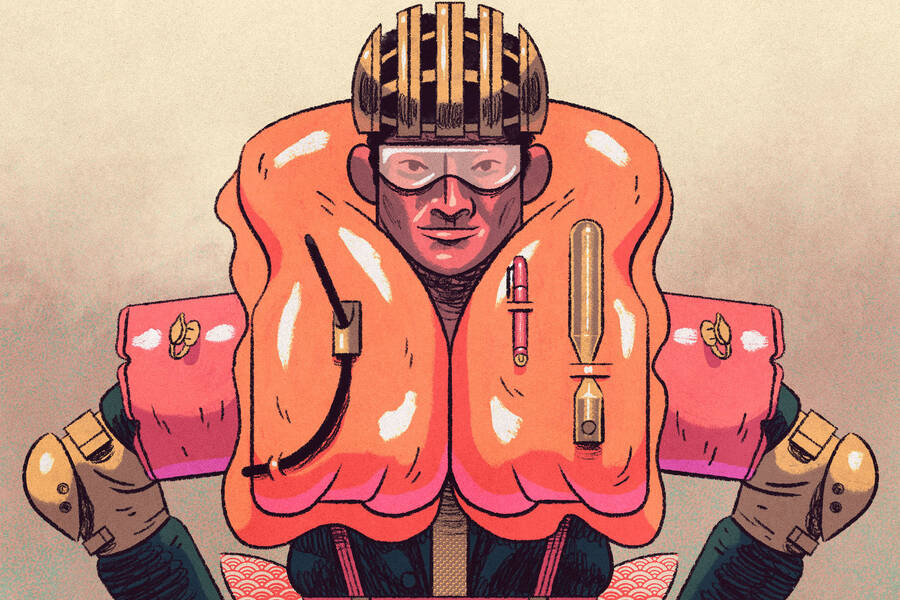Economics Oct 3, 2019
No, Extended Warranties Are Usually Not Worth It
So why do so many people keep buying them?

Yevgenia Nayberg
About 15 years ago, Yuval Salant bought a laptop at a major electronics chain store. The salesperson offered him an extended warranty to cover any repairs needed after the manufacturer’s warranty expired.
Salant decided to buy the warranty. “Why not just have a safety net?” he thought. But when he got home, he wondered if he had made the right choice. He consulted his cousin, who worked in the tech industry, and who informed Salant that laptops rarely break. “I realized that the warranty actually doesn’t make sense,” says Salant, now an associate professor of managerial economics and decision sciences at Kellogg. (He later returned the warranty.)
Salant is not the only one with doubts about the extended-warranty market. Its high prices and hefty profit margins for retailers—sometimes around 50 to 60 percent, according to Bloomberg Businessweek—have attracted suspicion from government authorities as well. They “realize that something does not add up,” he says.
Salant wanted to know why so many people buy extended warranties despite these high prices, which are often around a quarter of the cost of the product itself. Several possible explanations occurred to him. Are consumers willing to pay big bucks to avoid risk? Does the fact that retailers face little competition when selling extended warranties give them unchecked power to influence consumer behavior? Or do customers simply overestimate the product’s failure rate?
A new study by Salant and Jose Miguel Abito of the University of Pennsylvania suggests it’s the final reason: people believe that a product is far more likely to break than it actually is.
The researchers also found a way to curb this irrational behavior. If consumers are told the failure rate of the product they’re buying, they’re willing to pay much less for the warranty.
The findings point to how policymakers can best regulate the market. Some experts have recommended encouraging more competition to help bring prices down, meaning the average customer would stand to lose less money on an unused warranty. But that strategy “is going to be less effective than one would think,” Salant says, and may even backfire.
“Market Power” Means a Captive Audience
When it comes to warranties, Salant explains, retailers have a lot of “market power”—meaning that there is little competition—since consumers typically aren’t offered a choice between multiple warranty providers at the store.
“It’s like when you go to the movies, you pay a lot for the popcorn and the drinks. That’s because you are already captive,” he says.
People believe that a product is far more likely to break than it actually is.
The U.S. and UK governments have tried to help consumers make better decisions about warranties. The U.S. Federal Trade Commission advises people to consider the likelihood of product failure and cost of repairs, for example. Meanwhile the UK Competition Commission has suggested requiring electronics retailers to post their warranty prices alongside the price of the insured product in-store and in advertisements, allowing consumers to better compare warranty prices between stores, which may bring prices down.
But to know if these strategies will work, researchers first need to know what drives consumers’ enthusiasm for extended warranties: Is it risk aversion, or is it a distorted sense of how often products fail (or might fail for them)?
Why Do Customers Buy Extended Warranties?
To find out why warranties are so popular, Salant and Jose Miguel Abito at the University of Pennsylvania analyzed about 45,000 transactions at a major electronics retailer from 1998 to 2004. The data set, provided by the Institute for Operations Research and the Management Sciences, included information about prices, returns, and buyer demographics.
Among all electronics, an extended warranty cost 24 percent of the product’s price on average. And customers bought warranties between 20 and 40 percent of the time.
To understand what was driving this behavior, the team focused on TVs specifically.
They obtained TV failure rates from Consumer Reports, finding that TVs failed 5 to 8 percent of the time in this period, and used these rates to conclude that profit margins can be as high as of 62 to 73 percent.
The team then developed a mathematical model of the warranty market. In the model, retailers choose warranty prices to maximize profits, and consumers decided whether to buy the warranty based on the price and their assessment of the failure probability. The researchers used their model and data to determine whether consumers were simply risk averse, or whether they were somehow distorting the probability of their products failing.
The model made clear that the latter explanation was the culprit. “The risk aversion is negligible,” Salant says. “It’s not really what’s affecting people.”
Customers were distorting failure rates by a large margin. For instance, when a product’s actual failure rate was 5 percent, people behaved as if it was 13 percent.
More Informed Consumers Will Pay Less for Warranties
Was this consumer behavior happening because people did not know the real failure rates? Or did they recognize them but, during their decision-making process, assign too much weight to the possibility of an unlikely failure happening to them?
To find out, Salant and Abito ran an online experiment with about 1,000 participants. Participants were asked to imagine they were buying a TV. Some were told that an expert thought the TV had a 5% chance of breaking over the next three years (the average found in the Consumer Reports survey of popular TVs). Other participants did not receive that information and instead gave their own estimate for the failure rate. All participants were asked how much they would be willing to pay for an extended warranty.
People who were not given the expert assessment grossly overestimated the likelihood of needing repairs. Their average prediction was 13 to 15 percent, and they were willing to pay a median of $50 for the warranty.
However, people who saw the expert’s estimate said they would pay a median of just $25.
This made it clear that customers were buying warranties because they were fundamentally unaware of the actual odds of failure. “The willingness to pay goes down dramatically if they have the information,” Salant says.
Policy Solutions
Finally, the team used their model to predict how three different policy solutions might play out: better informing consumers, introducing more competition among warranty providers, or doing both together.
In a scenario where consumers were simply exposed to accurate failure rates, leaving all other market conditions the same, consumers bought fewer warranties. Warranty profits plunged by more than 90 percent in this simulation, even though retailers still enjoyed little competition and had the market power to set high prices. “The market power is not what drives the profit,” Salant says. “It’s the volume that drives the profit.”
In another scenario the researchers looked at what would happen if customers were able to compare the prices of extended warranties across retailers, but still weren’t informed about product failure rates. In this case, consumers fared even worse than they do today. That’s because the increased competition would lower prices, tempting more people to buy warranties they would never use.
But that doesn’t mean policymakers should abandon efforts to increase competition, he says. Consumers get the most bang for their buck when they can accurately estimate failure rates and the market is more competitive, the study found.
Salant suggests that government authorities should focus on both boosting competition and correcting perceptions about product failures—for example, by requiring that retailers publish failure rates in ads and stores. Until then, customers can—and should—consult resources such as Consumer Reports in order to assess products’ failure rates.
But Salant already has his mind made up. Asked whether he will ever buy an extended warranty again, he gives a one-word answer: “No.”





